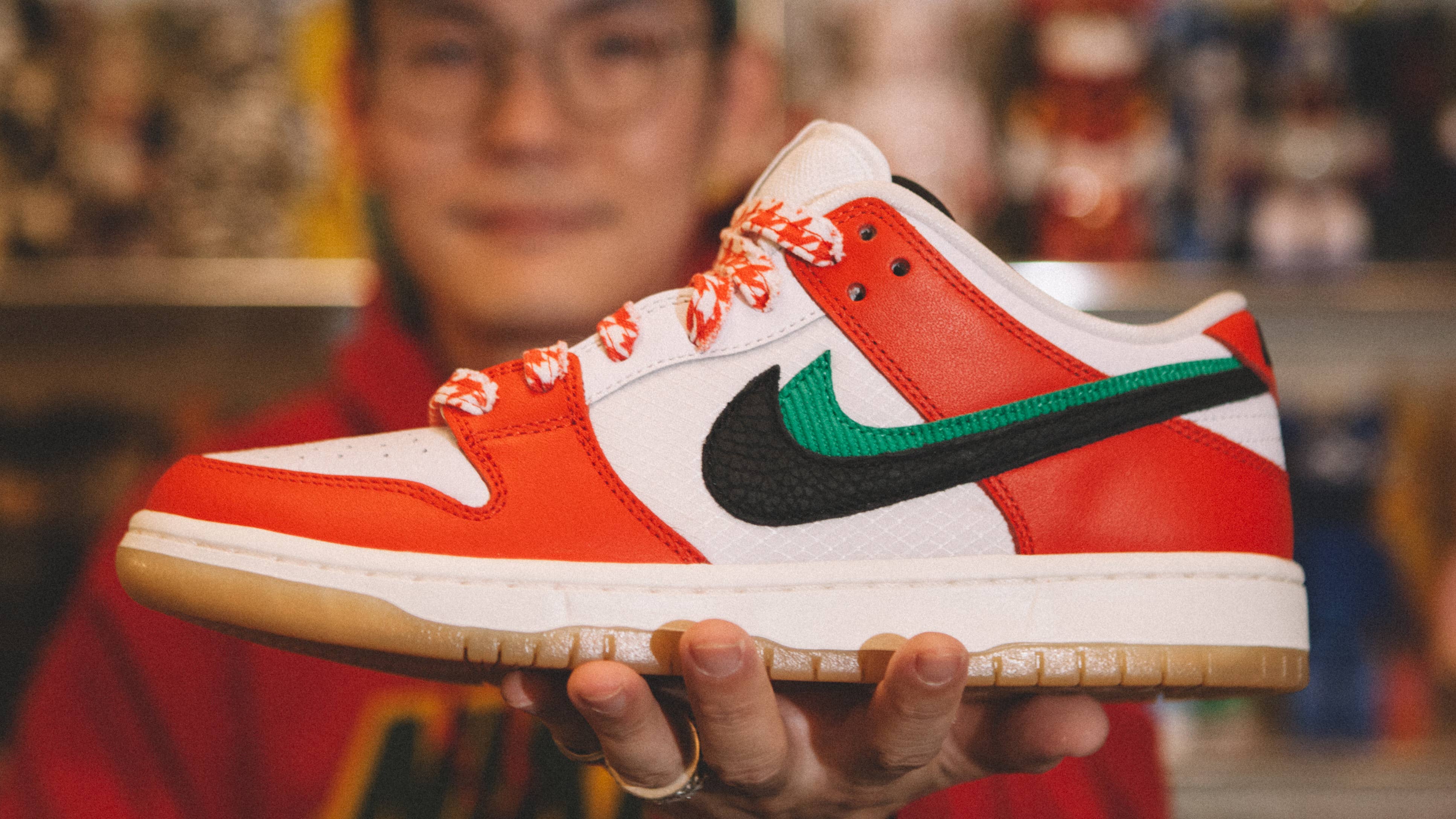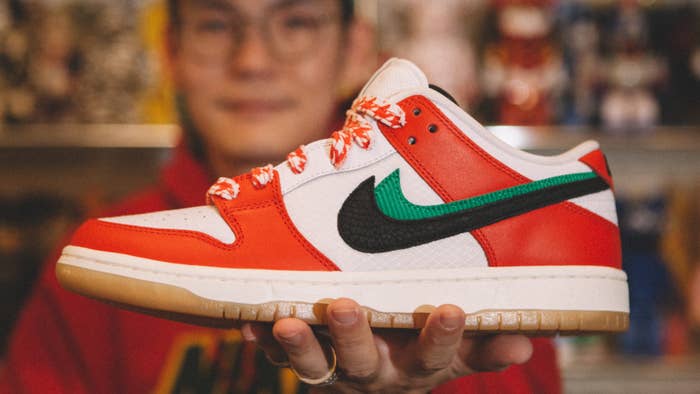
The pearl divers of Dubai now have their own sneaker. The falcon racers, the sheikhs, the skateboarders looking for a scene, and the budding hypebeasts of the glittering city in the United Arab Emirates have a shoe that they can claim. The Frame x Nike SB Dunk Low "Habibi," dressed in the UAE's national colors and crammed with details connecting it to the country, is the Arabian Peninsula's first major export in hype footwear. Like so many products and people of Dubai, it comes with a complicated story of origin and identity.
Where is it from? The shoe is a collaboration between Nike SB (Nike's skateboarding division) and Frame, a trio of businesses in the Dubai Design District that consists of a boutique, a ramen shop, and a cafe. Frame was founded as a "Japanese lifestyle culture shop" in 2017 by Peter Ahn, an expat from South Korea. He designed the "Habibi" Dunk as an homage to his adopted home. Fittingly, the sneakers released first at Frame on Dec. 2, coinciding with UAE National Day. While bakeries punctured croissants with miniature flags and beaches were dotted with bigger ones, Frame's Dunk arrived as another red, white, black, and green symbol of the holiday.
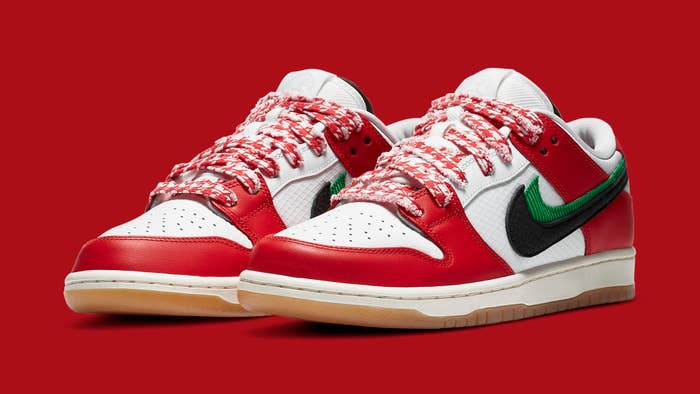
The Frame x Nike SB Dunk Low "Habibi" went global on Saturday, Dec. 5, releasing at SB accounts worldwide to the same kind of fanfare that has accompanied other specialty Dunks in this year of renewed interest in the retro silhouette. It is a reversal of the traditional flow of sneaker ideas between the Middle East and the rest of the world, a rare moment for the region to give something of its culture through shoes. But its roots aren't entirely Emirati. So where is it from?
The sneaker started in Amsterdam, where Ahn first designed it in early 2019. He was there for a Nike event called the Club 58 Summit, a meeting of SB retailers from Europe, the Middle East, and Africa that featured a Shark Tank-style competition where shop owners got to pitch ideas for their own SB collaborations. Getting your own sneaker can literally put your store on the map, transforming it from local spot to destination. It's a dream scenario for owners like Ahn, who sometimes spend years trying to convince Nike their clout is sufficient to warrant a collab. At the competition in Amsterdam, he had just a couple of hours.
"Fortunately, as an avid Nike head, I had a few designs in my mind already," he says, "and put together the proposal for the design that felt the most appropriate at that point in my life and told the story of Frame."
Ahn sent the concept to his shop team and friends in Dubai, who sent back a detailed drawing of what would eventually become the "Habibi" Dunk. It had two Swooshes sitting on top of each other, two tongues, and a red, white, black, and green colorway nodding to Frame's home country. It also had the Arabic transliteration of "Nike" in place of the brand name's typical hit on the heel. The design won the competition, earning Ahn and Frame the right to release a shoe with Nike SB.
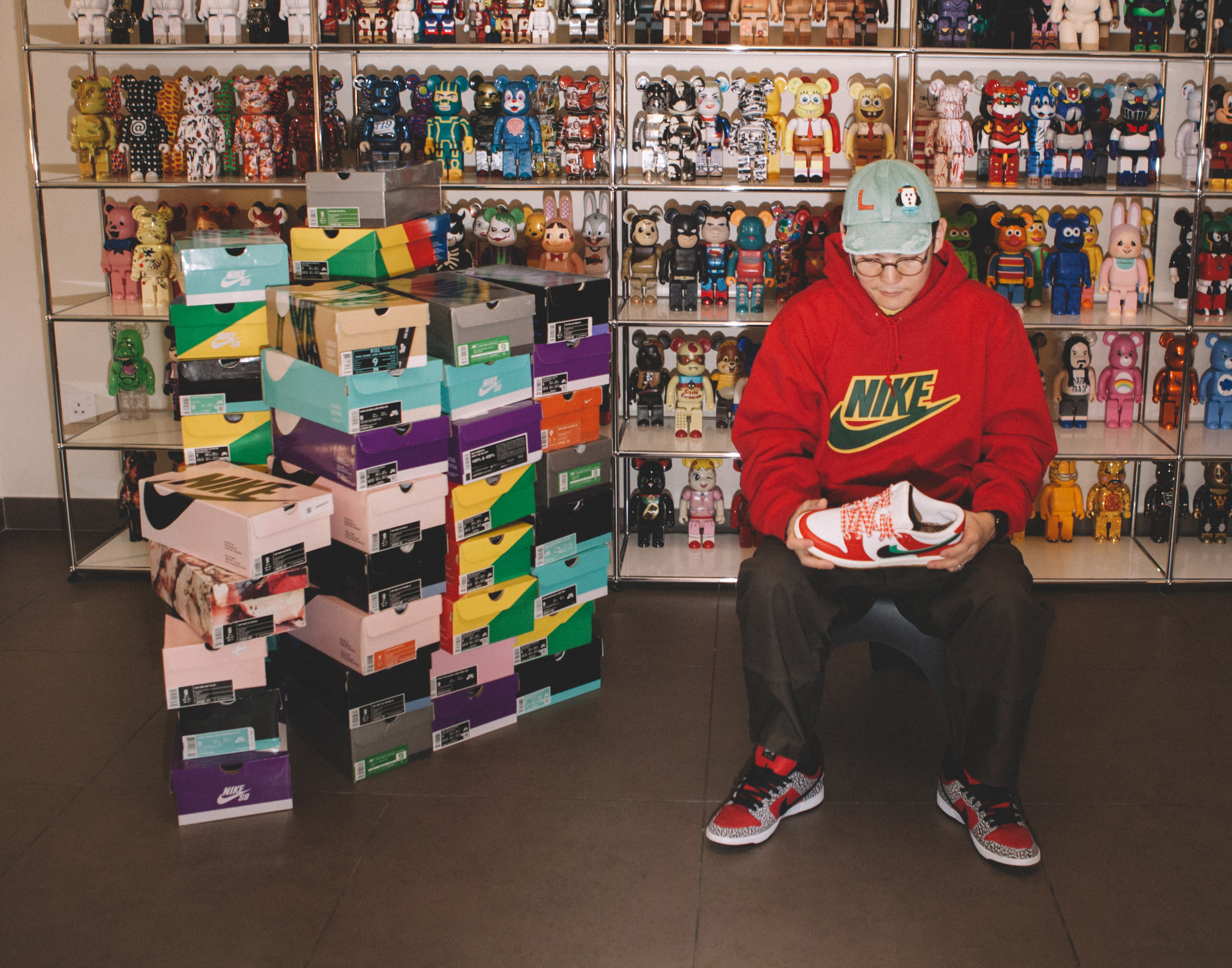
The "Habibi" Dunk went through many forms from that rendering to its retail release this month. The first sample used canvas for its base and thick cushioning in the tongues. The next mixed in more material, testing out a suede on the toe box that was eventually scrapped.
"I wanted to use suede on the red tip and heel but had to give up on the idea because the red would stain the white leather on the toe box," says Ahn.
In the tinkering, more and more details connecting the sneaker to its home city were added. The shoe was dubbed the "Habibi" Dunk, its moniker an Arabic term of endearment that means "my love." It is intended as a love letter to Dubai.
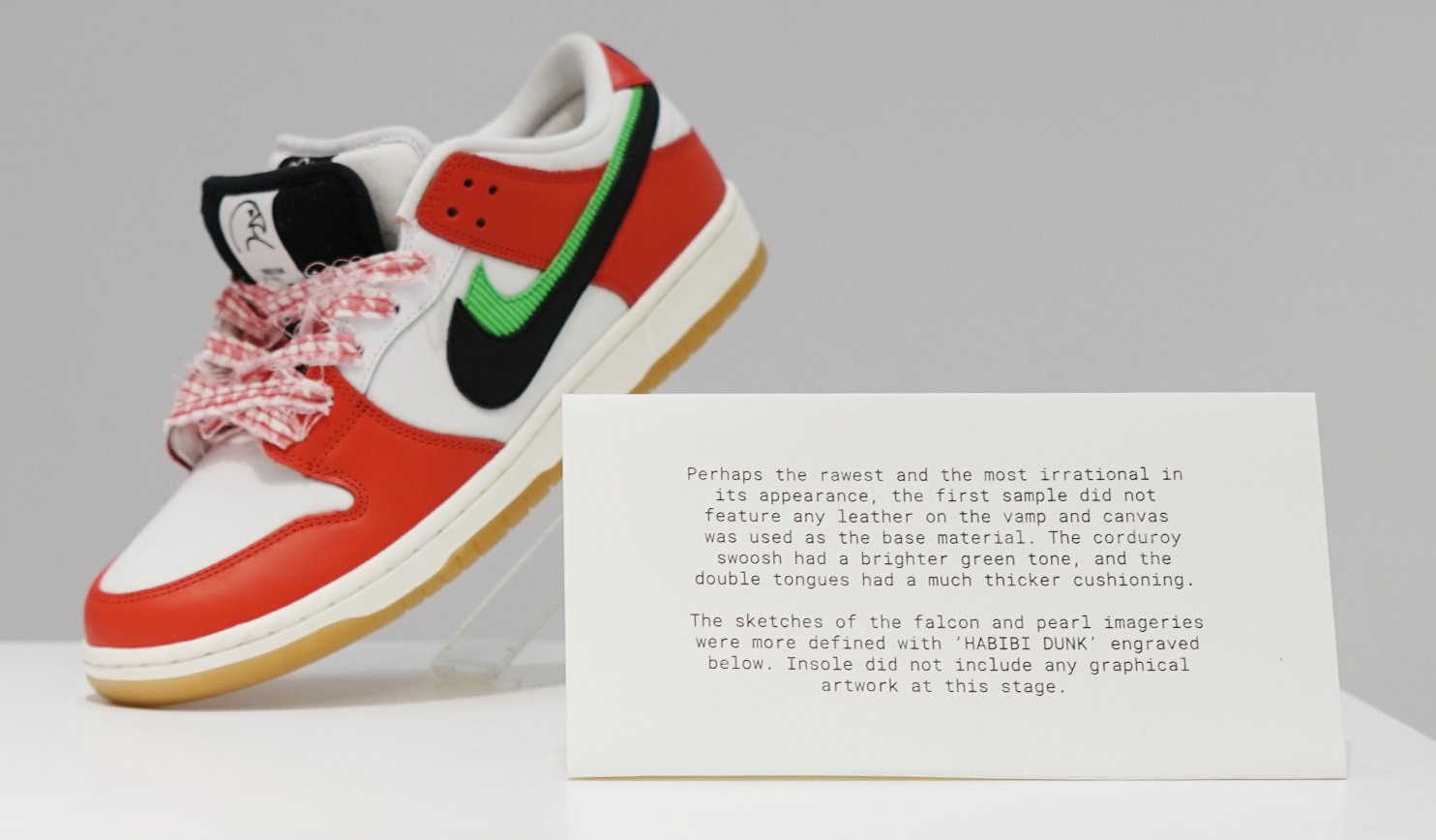
The insole has an arabesque pattern representing the Memorial Fountain, a longtime skate hub in Dubai. The skateboarding part is important—Ahn hopes he can use the shoes as a vehicle to nurture the skate scene there. The gum sole on bottom stands for the sand the city rose from. The ripstop quarter panel is a reflection of the fishnets in Dubai's harbors. The two tongues, one black, the other white, are meant to show "the equality and unity between men and women." The removable white tongue on top has a falcon graphic, the black on bottom has an oyster opening to show a pearl.
The doubling motif is a familiar one, popularized by Japanese brand Sacai's LDWaffle Nike collaboration that debuted in early 2019. Given that Ahn first designed the Frame Dunks around the same time, it's hard to imagine Sacai's Nikes weren't an influence. But he says he did not have that shoe in mind when creating his.
"I thought the double Swoosh and the two tongues symbolized the union of complexity and duality," Ahn explains.
The complexity and duality of the "Habibi" SB Dunk Low, with respect to the culture it draws from and questions of its origin, may be deeper than Nike or Frame intended. For some sneaker collectors in the UAE and surrounding countries, it is a moment too big to ignore.
"Now that I understand the significance behind it and how important it really is to the region, it might be the first SB I'll probably cop," says Tareq Q, a blogger from Kuwait who has a deep collection but was never into Nike SB.
For others, the sneaker falls short of being a true representation of design by the Arab world. In this view, the "Habibi" Dunk comes from Dubai but is not native to it.
"I appreciate and respect the achievement, because at the end of the day it’s the first-ever GCC-based shoe design," one retailer in the area tells Complex, referring to the Gulf Cooperation Council union of countries the UAE belongs to. "But I feel that the execution process could have been handled better and with more respect to the culture it claims to boast."
The retailer, who asked to remain anonymous out of sensitivity to their relationship with Nike, pointed out what they believe are errors in the approach of the "Habibi" Dunk. The design is very much indebted to the United Arab Emirates, but an Emirati did not design it. The original intention to write "Nike" on the heel was a potential disaster avoided—the word's Arabic transliteration can be read as the past tense of "fuck." The shoelaces are inspired by the shemagh headdress, but use a houndstooth print instead of a shemagh pattern.
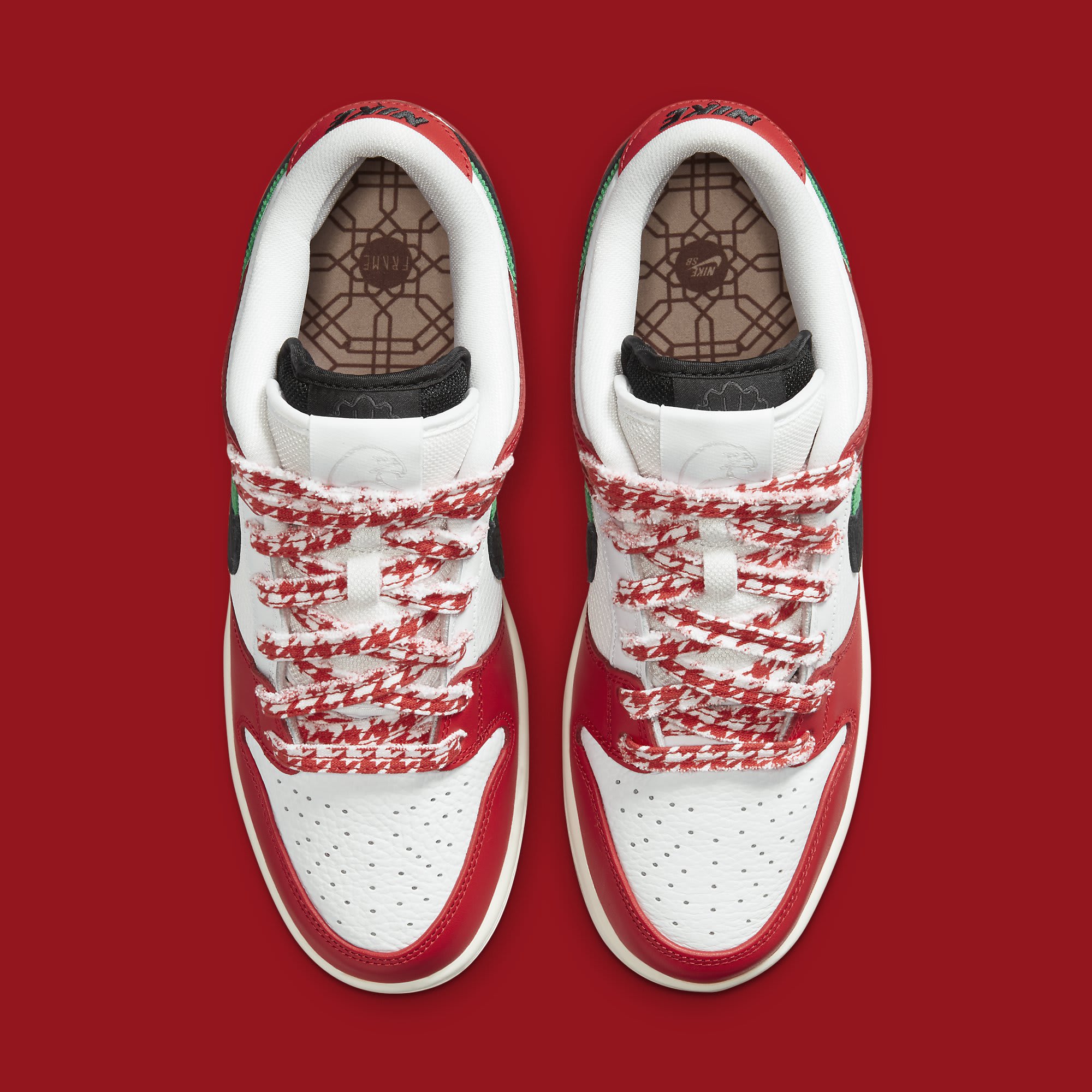
"The shemagh is something that many Arabs share within their subcultures, so to see the authentic pattern disregarded was a bit hurtful," the retailer says.
In explaining the discrepancy on the laces, Ahn says they are meant to evoke the feel of a shemagh but needed to use thicker material than that of the actual headwear if the shoes were to be used for skating. Why they didn't print the original pattern on a thicker material is unclear. He says Frame decided not to write "Nike" in Arabic because he felt the shoe already had enough details tying it to the UAE.
Decisions like these must consider the potential for sportswear to spark controversy for both regional and religious reasons. Earlier this fall, Adidas issued a name change for certain Yeezy sneakers that were named after Islamic angels, asking stores carrying the shoes in the Middle East to relabel their boxes. In 2019, the Nike Air Max 720 inspired a 50,000-signature-strong petition complaining that the logo on the sneaker's outsole resembled the Arabic script for "Allah." In response to calls for Nike to pull the shoe, the brand issued a statement saying that it respects all religions and that the mark on the bottom of the shoe was "intended to reflect the Air Max brand only."
The most infamous sneaker of this sort was the Nike Air Bakin' from 1997, which had a flame icon on its heel also resembling the word "Allah" in Arabic. Nike reached an agreement with the Council on American-Islamic Relations over the Air Bakin' shoe that year, recalling around 38,000 pairs and diverting another 30,000 from markets in Saudi Arabia, Kuwait, and other countries.

The Frame x Nike SB Dunk Low "Habibi" is far from being controversial on the level of any of the aforementioned shoes. The criticisms about its snafus have been mostly whispered about. They have not stopped it from being a sellout sneaker that's going for 400 percent over its original retail price on the secondary market. They have not stopped people in Dubai from celebrating and enjoying the first significant sneaker made for them. But the criticisms do reveal how hype items in the Middle East can become entangled in tradition, politics, and religion.
The conversation doesn't end at the sneaker's design, either. Distribution for the "Habibi" Dunk was a point of contention for customers in Qatar, the only GCC country that couldn't participate in Frame's release of the shoe. The UAE cut ties with the country in 2017 after a diplomatic crisis and has been engaged in a boycott since. One sneaker blog in Qatar called the "Habibi" Dunk a flawed, "politically restricted" design and decided to create a similar "Free Palestine" custom sneaker as an alternative.
In picking up some of this cultural baggage in the path to its release, the "Habibi" Dunk came to look more like a product from the UAE. If its greatest shortcoming is lack of local input, it might be at home in a country where Emirati nationals make up only about 10 percent of the population. The idea of being a local there is a fuzzy one anyway—even non-Emiratis who were born and raised in the country aren't guaranteed citizenship. Maybe it makes sense that the first big sneaker for a city filled with expats was designed by one. Maybe this first step had to be a somewhat surface-level one, despite the depth that Dubai, the Gulf, and the Arab world have to offer. The "Habibi" Dunk is Arabic in name, but it's hard to see it as an Arab sneaker. It is complicated, coveted, and caught up in a long history of overlapping cultures. It could only be from Dubai.

